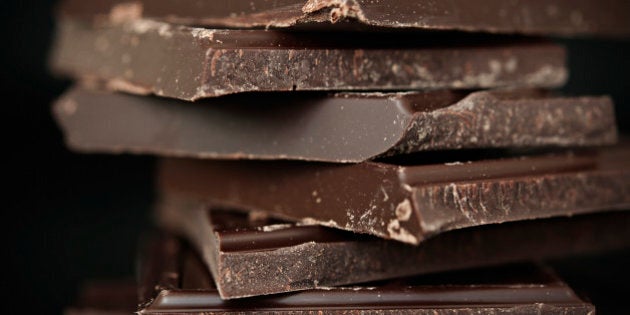
"All you need is love. But a little chocolate now and then doesn't hurt."
-Charles M. Schulz
About three decades ago, something devastating happened in Brazil. An infectious disease had struck the cacao trees and threatened to wipe out the population. Some 70% of these plants fell victim to this deadly ailment. The industry faced decimation.
Officials tried to stop the progression but it was hopeless. The situation was becoming dire. If something wasn't done, chocolate was surely going to disappear. Researchers went into the fields of Brazil in the hopes of saving one of the most beloved foods on Earth.
The first order of business was to find the culprit causing all the trouble. Researchers discovered the pathogen to be a very old foe first described in the 1700s. Back then, it was called Witches Broom Disease. Over time, it was found to be caused by a fungus called Moniliophthora perniciosa.
This fungal villain causes a terrible disease. Once it latches on to a tree, it first sucks all the nutrients away effectively starving the plant. There is no recourse other than death. But the infection isn't finished. The microbial pathogen then feasts on the dead tissue and forms a mushroom cap. Spores are produced and eventually released allowing the infection to spread.
Because of the horrific nature of infection, there are only a few possible routes for control. Antifungal agents are not useful and alternate planting options cannot do the trick. The only route is to help the chocolate plant become resistant to the infection. Researchers since have developed several different breeds capable of defending against the fungal attack.
While these efforts have gone a long way to help sustain the cacao plant, there has been one unfortunate side effect. Many of the new types do not make very good tasting chocolate. Although some researchers have tried to improve the taste, no one has come up with the best way to make chocolate taste great again.
Now that may change thanks to an international group of researchers. They have found a new way to bring the wonderful flavour we all love back to the end product. Their results reveal a need to depend not on breeding, but fermentation.
Anyone taking a bite out of the bean straight from the plant can tell you it is incredibly bitter and astringent. In order for the creamy, sweet taste to appear, the beans must undergo fermentation. Success is highly dependent on the types of bacteria and yeasts used. The right combination can lead to the perfect taste while an imbalance can end up leaving an unpleasant after taste.
When resistant types of the cacao plant were bred, there was little care for the fermentation process. The goal was to ensure survival of the species. The authors took this into consideration for their study. The team knew they needed to come up with a new blend of bacteria in order to restore the desired flavour.
They accomplished this in a straightforward manner. A group of fresh cocoa beans were allowed to ferment. In some cases, they were left to ferment on their own. In others, the team added a microbial mixture containing species known to be involved in fermentation. The beans were left there for 6 days -- the normal time for fermentation -- and then collected for analysis.
As for the beans, they were analyzed for a variety of tasty molecules including sugars, acids, and alcohols. Finally, the end chocolate product was given to judges to evaluate the flavour.
Once the sampling was complete, several microbial species were found to provide the best flavour. They included familiar names such as Lactobacillus, also known as probiotics, the yeast Saccharomyces cerevisiae, and Acetobacter, which as the name implies, creates acetic acid or vinegar. Not surprisingly, these species are known to be present in chocolate fermentation mixtures from other areas of the world.
For the authors, the results reveal the new breeds of cacao require a little help in ensuring quality of taste. Thankfully, they now have a list of useful microbial options. All that is needed is to determine avenues to bring the bacteria to the fields and integrate them into the fermentation process.
With inclusion of these bacteria in the mix, Brazil soon may be able to move past this terrible tale. The markets may have a chance to rebuild allowing farmers to return to the fields. But perhaps more importantly for us in Canada, this study may ensure a continual chocolate supply for all those chocoholics who simply cannot do without that delicious, creamy texture and wonderfully complex flavour.
Follow HuffPost Canada Blogs on Facebook